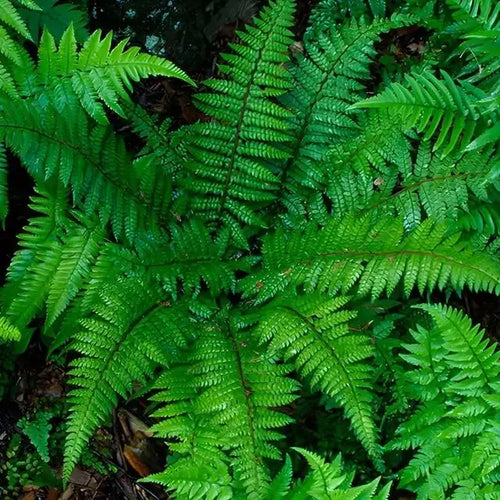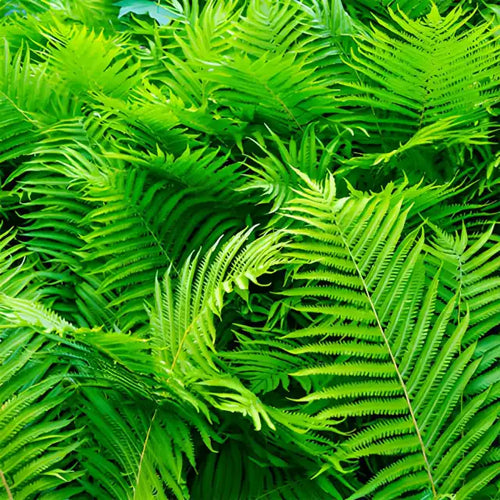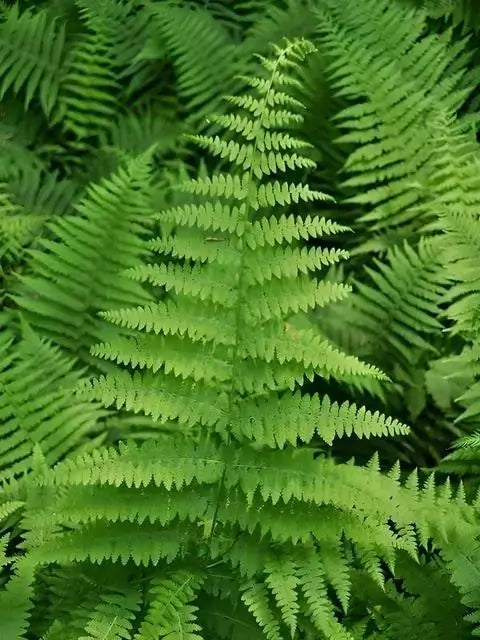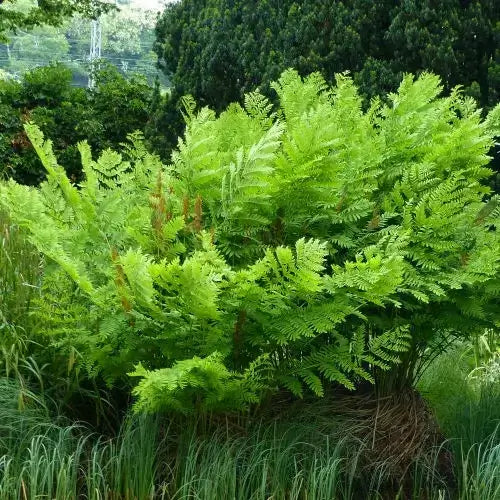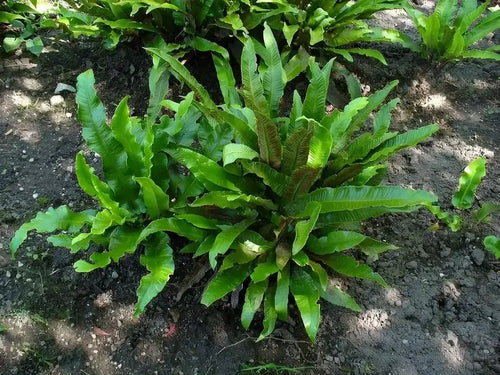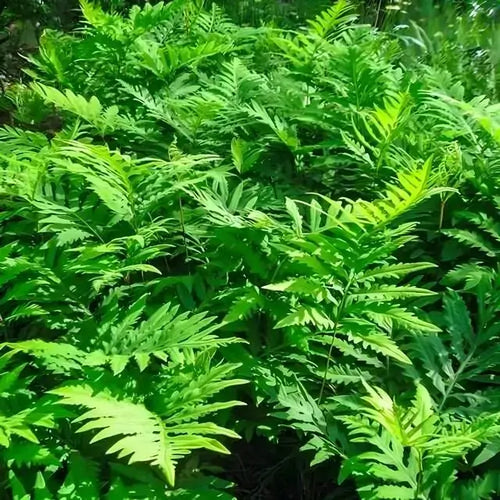Hay Scented Fern
The Hay-Scented Fern is a deciduous fern known for its delicate, finely divided fronds and a distinctive fragrance reminiscent of freshly mown hay when crushed, commonly found in woodland areas. It is a versatile and attractive plant with numerous landscaping benefits. This deciduous plant is native to North America and can be valuable to garden designs, incorporating texture, ground cover, and visual interest.
Hay-Scented Fern Characteristics and Usage
The Hay Scented Fern offers gardeners and landscapers a convenient way to provide green ground coverage to any outdoor area. The fronds have a striking appearance due to their intricate leaflets. They also give off a unique scent, which is how they get their name. If you want to plant these intriguing plants in your yard or garden, read on as we tell you what you need to know about them.
Aesthetics Of This native Fern
The short answer is yes. The fronds of the Hay Scented Fern have individually cut leaflets that grow opposite each other. The subleaflets mimic the frond's appearance, resulting in a very intricate design and a microcosm of the plant as a whole. The color of the fronds is a verdant green in the spring and summer, giving way to a golden yellow in the fall - evocative of the colors that we commonly associate with that time of year. So, the Hay-Scented Fern will naturally keep up with the motifs of the changing seasons. The fronds of the Hay-Scented Fern are unique because they grow straight up from the underground rhizome (the stem). The fronds spread over spring and summer to cover the soil below.
Hay-scented fern fronds can grow about a foot wide and up to four feet tall
They have a blade-like shape that tapers to a fine point. Even at the very tip of the fronds, you can still see tiny leaflets mimicking the overall shape of the leaves. This makes them very intricate plants that evoke awe and wonder at nature's designs, whether you are looking at them up close or from afar.
The fern adds a lush, forest-like aesthetic to outdoor areas. It is found in wooded areas in North America and has been added to many landscapes to affect the calm, serene aesthetic of dewy forest with dense undergrowth. Of course, the Hay Scented Fern offers gardeners an easy way to add a touch of green to brown or drab landscape areas. They work exceptionally well as edgers around hardscapes and can be used to replace grass where it may be challenging to grow.
Love To Smell Fresh Cut Hay? Hay Scented Ferns Has This Summer Aroma
The beauty of the Hay-Scented Fern does not end with its visual qualities. It entices the sense of smell as well. When the fronds are rubbed, pressed, or otherwise disturbed, they give off a distinct scent of freshly cut hay. The aroma is evocative of the smells we associate with the summer months and adds an immersive element to your yard or garden.
What Does Hay-Scented Fern Offer?
It's clear that the Hay Scented Fern is a beautiful plant, but are there any practical benefits to growing it? Indeed, and here are just a few advantages: They Provide A Habitat for Wildlife - The Hay-Scented Fern provides good cover for small, ground-dwelling animals. So, if you want to make your property a sanctuary for various wildlife, this fern will provide immediate appeal. The spores on the underside of the fronds are also food for certain insects that help enrich the soil.
They Prevent Soil Erosion- This is a deciduous type of fern, which means it sheds its fronds every year only to grow new ones in the spring. This helps to stabilize the soil and prevent erosion from overdrying. The roots of the fern can also help bind the soil. They Are A Native Fern-As a fern native to North America, the hay-scented fern is easy to grow and maintain and helps purify the soil.
Other ferns like this also help remove toxins from the soil and even purify the air. They Keep Away Deer - If you are having trouble with deer damaging your plants, the Hay-Scented Fern can deter them. Lining the edge of your lawn or garden with Hay-Scented Fern can help keep deer away as they are not attracted to this type of plant.
Hay-Scented Fern Frequently Asked Questions
Now let's cover some important topics about this fern and how to take care of them:
What is the Hay-Scented Fern Used for?
In suburban gardens, the Hay-Scented Fern is often used as groundcover and to provide some greenery to a landscape. In more rural areas, Hay-Scented Ferns can repel deer and other small, problematic critters.
How Big Do Hay-Scented Ferns Grow? The fronds of the Hay Scented Fern can stretch to about a foot wide. The plant can reach a height between one and four feet at maturity. Their size makes them an excellent choice for small garden areas. And if you have a large area you need to cover, they can spread quickly if you have ample shade.
Do Hay-Scented Ferns Like Sun or Shade? The light requirements for Hay Scented Ferns are shaded to partially shaded areas. They also like acidic, moist soil that drains well.
How Do You Plant Hay-Scented Ferns? It's best to plant these ferns in the spring. The hole should be the depth of the rootball itself and twice as wide. The crown should be about ½" below the surface of the soil. Add compost to enrich the soil and help the Hay-Scented Fern grow properly.
When Should I Prune Hay-Scented Ferns? Pruning is necessary for these ferns unless fronds or leaflets are yellowing or dying before the season. To prune, cut back the fronds down to the soil line. Any pruning should be done in the early spring after all growth has ceased. Easy and Fun Planting
The prime fern specimens we sell here at TN Nursery will have you growing beautiful green plants in no time. Plus, we offer grower direct pricing so you can beautify your garden affordably. Enjoy the beauty and practical benefits of ferns by placing an order today
Hay-Scented Fern Smells Like Fresh Hay That's Just Been Harvested
Hay Scented Fern Dennstaedtia punctiloba, a deciduous fern, has the aroma of freshly cut hay when crushed. Up to two feet (60 cm) tall, they may extend to three or four feet (0.9-1.2 m) broad. The rhizomes of this fern, which are underground stems, are responsible for the fern's singular growth.
The fronds of the hay-scented fern become a delicate yellow in the autumn. This ground cover's long lifespan is a great asset, and it's a hardy native favorite that cleans toxins from the air and the soil.
These ferns form dense clumps and are known to keep deer away. Hay-scented ferns may be found from Newfoundland to Alabama, although the eastern states of North America have the greatest concentration. U.S.D.A. climatic zones 3-8 are home to hay-scented ferns.
Forest floors are carpeted with a lush green carpet of moss and ferns. Meadows, farms, and cliffs are other typical habitats for these plants.
How to Grow a Hay-scented Fern in Your Garden
Hay-scented ferns are very simple to grow since they are resilient and quickly establish themselves in the garden. A well-drained region is ideal for these ferns. Add some compost to your soil if it's lacking in nutrients. To keep the ferns from interfering with one other, you should plant them approximately 18 inches (45 centimeters) apart.
Slightly acidic soil is ideal for these ferns, which thrive in partial shade. They will not seem as lush and vibrant when grown in a whole light. Ferns in a Haystack The hay-scented fern are challenging to control once it has taken root and spread. Pulling off part of the spring growth will curb the spread of these stubborn plants if your garden needs it. Caring for a hay-scented fern does take little energy.
Fish emulsion fertilizer may be used to restore the color of your ferns if they begin to fade. It has been reported that these ferns may last for a decade.
Uses of Hay-Scented Ferns
Wildlife Significance of Hay-Scented Ferns The Hay-Scented Fern's environmental significance to animals is pretty poor. Like other ferns, it does not constitute a significant food source; however, a few insects allegedly feed on the spore-bearing fronds. You may use them as a border-edging ground cover and naturalize your landscape with them
This hardy fern favorite is native to open woodlands. Its natural elegance can enhance any space, whether it's growing in a pot, adding charm to gardens, or providing flawless ground cover.
Decorative Attributes of Hay Scented Fern
Also known as dennstaedtia punctilobula, this classy and stylish greenery is both functional and decorative in a laid-back way. The plant has narrow fronds that create bright green leaves throughout the spring and summer. In fall, the fronds turn golden yellow to display a stunning seasonal color.
These plants provide superior ground cover, and because of their decorative qualities, the fragrant ferns can add texture and splashes of bright greenery to shade gardens. The greenery also makes a unique and striking border for garden beds.
Scented types exude an aroma of freshly cut hay in the late summer, which is how this plant got its name. The wonderful aroma smells like summer itself, with the fragrance of freshly mowed lawns hanging sweetly in the warm air.
When the stems are disturbed or broken, they release a fresh, summery fragrance. Perhaps because of this scent, the plant repels rabbits and deer, which many gardeners appreciate.
Because these deciduous plants lose their leaves in late fall and early winter, they produce fresh growth throughout the spring and summer because they are shade perennials.
Hay Scented Fern Reaches 2 feet in height at maturity
Unlike many other species, Hay Scented Fern has individual fronds that grow almost straight up from an underground stem called a rhizome. Plants can be up to two feet tall and four feet wide. The feathery, finely textured fronds are appreciated for their lush and abundant appearance.
After emerging from the creeping underground stems, the fronds spread slowly, forming clusters of bright green carpeting over the ground. Abundant little leaflets give the fronds their lush, feathery appeal.
Hay Scented Fern Has Unique Foliage
The small leaflets have finely serrated margins and pointy, lance-shaped tips positioned alternately along the length of the stem. The fronds provide a stunning explosion of vibrant green foliage, making a spectacular backdrop for any surrounding landscape.


